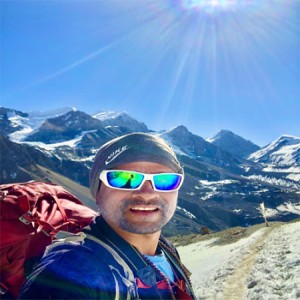1. The Langtang Valley with Ganja La Pass Trek—14 Days
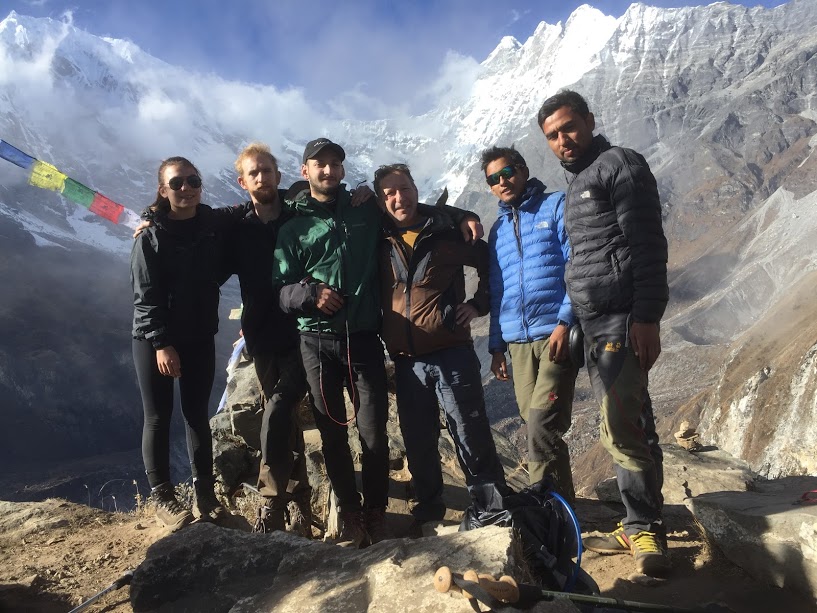
The Langtang Valley with the Ganja La Pass trekis a thrilling adventure through the famous Langtang Valley to the Himalayas in the north near the Tibetan border. Langtang is located about 30 kilometers north of Kathmandu. Despite being closer to Kathmandu, the Langtang region is relatively less crowded. Langtang is bordered on the north by the main crest of the Himalayas, dominated by Langtang Lirung (7,245 m), the highest peak in the area.
Langtang is also famous for glaciers, as it has more than 70 glaciers, and high-altitude lakes, including Gosainkunda, Parvatikunda, Bhairavkunda, and Dudhkunda. This 14-day trek combines Langtang with Ganja La Pass (5122 m/16,800 ft). In Langtang Valley, the ascent to Tserko Ri (5,000 m/16,404 ft) offers breathtaking views of the Langtang and Ganesh Himal mountain ranges.
The Langtang Valley boasts a varied landscape with snow-capped mountains, ridges under blue skies, rhododendron, oak, and bamboo forests, and expansive waterfalls.
Experience the amazing cultures of the native Tamang and other ethnic groups, such as the Sherpas, Yolmus, and Bhotias of Tibetan descent who live in the highlands, by trekking the Langtang Valley with Ganjala Pass. Their beautifully carved, traditional houses, among other craftsmanship, reflect their rich Himalayan heritage.
The trails on the rugged terrain pass through the forests of bamboo, oaks, pines, and maples surrounding the Langtang River gorge in Langtang National Park. It has to be noted that the park has diverse flora and fauna. The endangered red panda can be spotted in the bamboo forest.
The trek for three consecutive days through the panoramic forests and surrounding hills with the background of the snow-capped Himalayas gets one to Kyangjin Gompa, the main Buddhist monastery in the Langtang region. The monastery is one of the most popular destinations. The Kyangjin Gompa offers amazing views of the Langtang Lirung (7,200 m/23,622 ft) range.
Trip Highlights
- Drive from Kathmandu to Syabrubesi in view of mountains, hills, and the country.
- Combination of Langtang and Helambu
- Diverse scenic elements: forests, rivers, alpine forests, pastureland, yaks
- Snow-capped mountains—Langtang Ri, Langtang Himal, Langsisa, Ganjala Peak
- Old Buddhist shrines—Kyangjing Gompa
- View of the entire Langtang and Ganesh Himal mountain ranges from Kyangjing Gompa
- Ascent to Tserko RI (5,033 m/16,404 ft)
- Diverse Flora and Fauna—rare endangered red panda, snow leopard, musk deer, bear, langur, etc.
- Ganja La pass (5,122 m/16,800 ft.), the highest point
- Old and significant Buddhist monasteries, stupas, and monuments
Trek Difficulty:
Required Permits:
- Langtang National Park Entry Permit (NPR 3,000 per person)
- TIMS Card (NPR 2,000 per person)
2. Mardi Himal Trek—8 Days
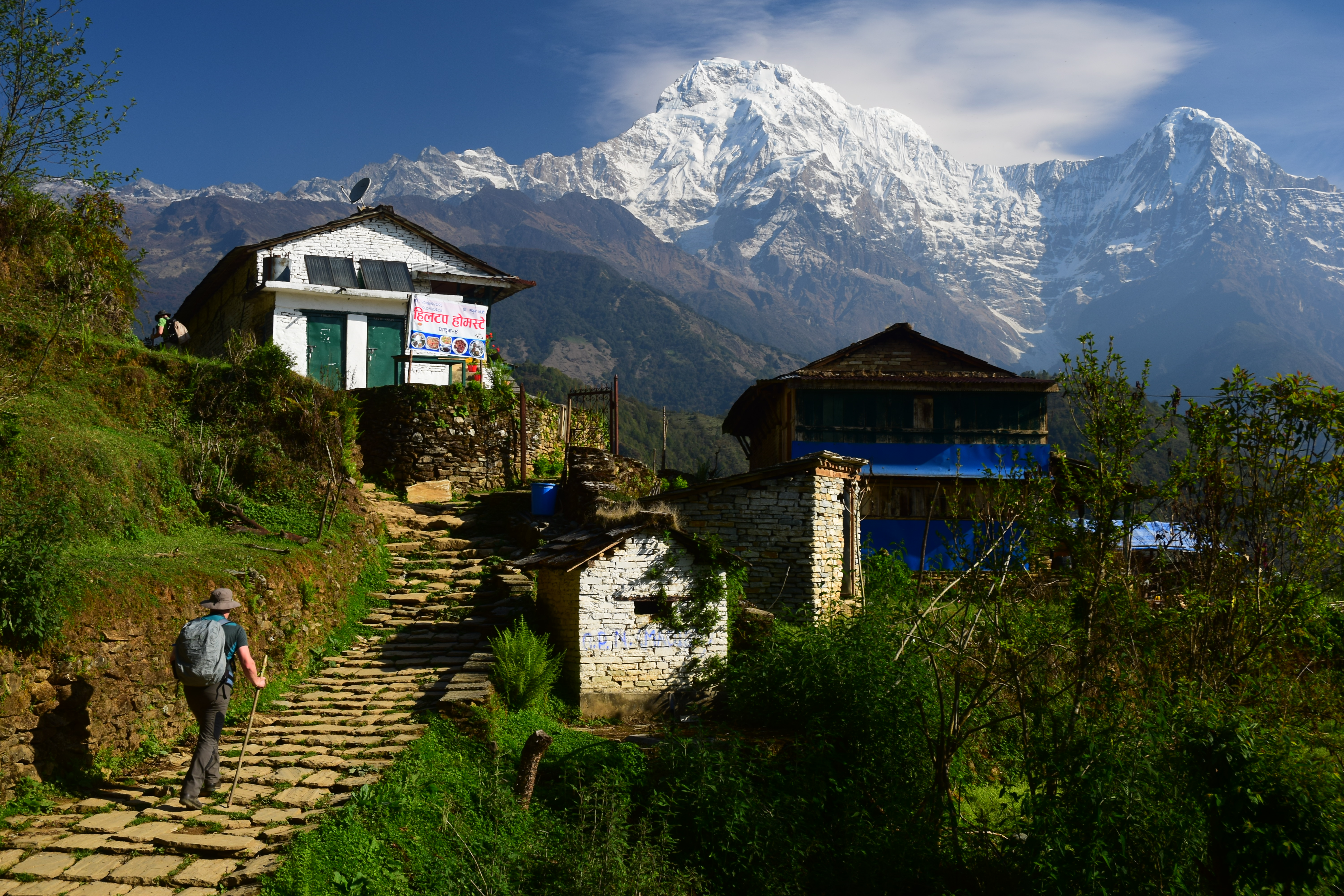
The Mardi Himal Trek offers a scenic journey through one of Nepal’s lesser-known trails. A key highlight of this route is the variety of landscapes it passes through—from dense forests and terraced farmlands to snow-covered ridges. Mardi Himal (5,587 m) lies just beneath the majestic Machhapuchchhre (Fishtail) in the Annapurna region. It was first climbed by Basil Goodfellow in 1961.
Although opened to trekkers only in 2012, the route now features well-established lodges and teahouses along the ridge leading toward the base of Mardi Himal. Compared to the Everest Base Camp and Annapurna Base Camp treks, Mardi Himal is relatively easier, yet equally stunning. This quieter corner of the Annapurna region offers a peaceful and serene atmosphere, ideal for those seeking solitude on the trail.
The trek ascends to High Camp at 3,600 meters, with a further climb to the Mardi Himal Viewpoint—also referred to as Base Camp—at 4,500 meters. This remote trail leads away from the busier routes and into alpine meadows, where you’ll often see grazing yaks and expansive views of green hills and Himalayan peaks.
The trek begins from Kande, which is about an hour's drive from Pokhara. The trail takes trekkers to Pothana (1,925 m), and the next day to Forest Camp (2,600 m), hustling the way through the lush green forests. Subsequently, the walk from the Forest Camp to High Camp (3,600 m) is 6 to 7 hours. Walking along the narrow ridge brings hikers to the upper viewpoint. You get an overwhelming view of the Himalayas. While returning, it is an easy trek descending to Low Camp. The following day, a 4-hour hike to Siding village and a 3-hour drive to Pokhara.
The Mardi Himal Trek features the unspoiled alpine pastures in the endless wilderness. On this trek, visitors get the opportunity to have a remarkable local experience.
Trip Highlights
- Off-the-beaten-path classic trek
- Less crowded trails
- Panoramic views of Annapurna, Dhaulagiri, and Manaslu.
- Green, dense alpine bamboo forest
- Unique Himalayan flora and fauna.
- Up-close view of the Annapurna range.
- Traditional villages—Phedi, Landruk, Pothan, among others
Trek Difficulty:
Required Permits:
- Annapurna Conservation entry permit (NPR 3,000 per person)
- TIMS Permit (NPR 2,000 per person)
3. Makalu Base Camp Trek—22 Days
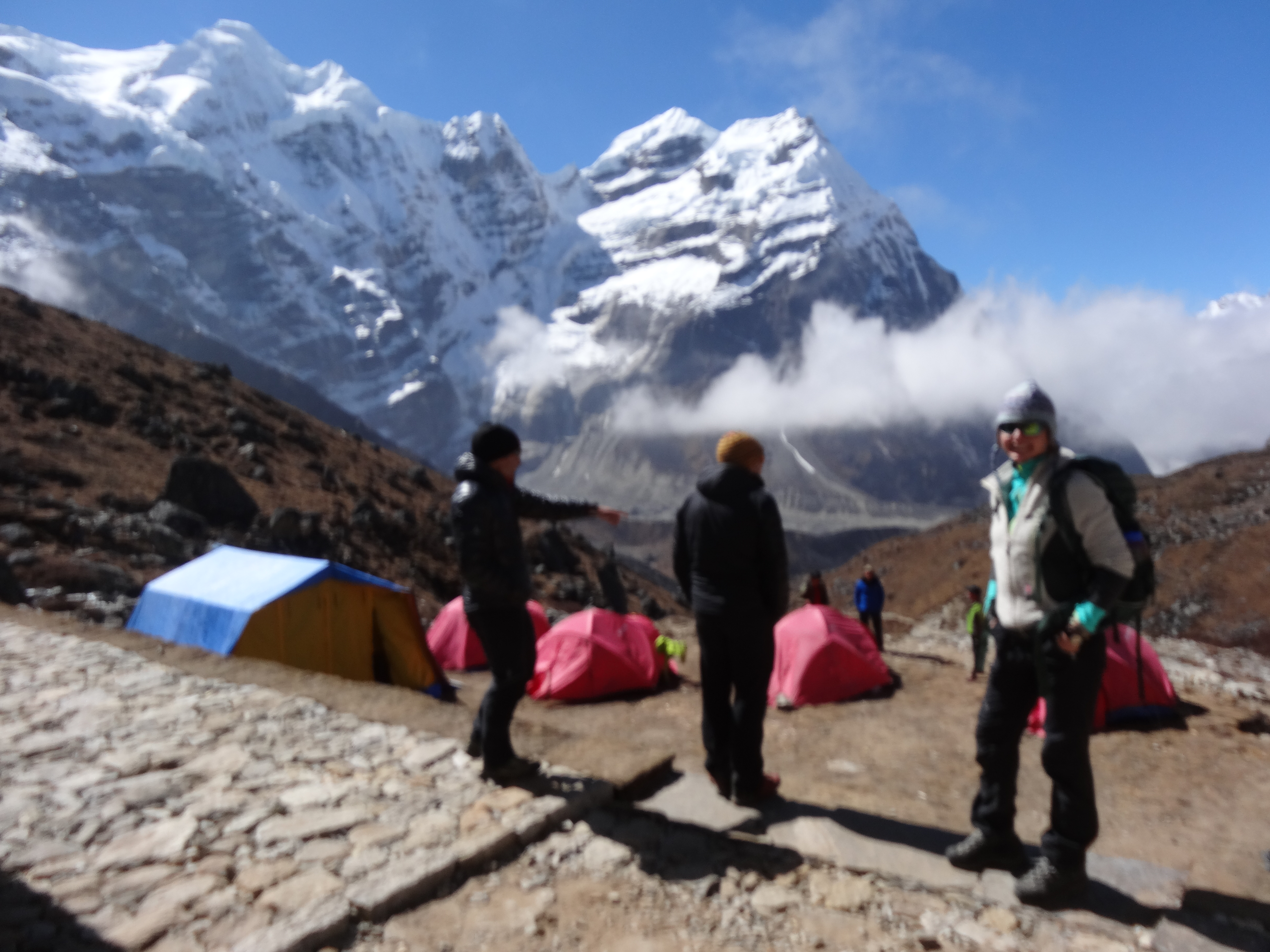
The Makalu Base Camp Trek is one of the most demanding remote area adventure journeys in Nepal, offering dramatic landscapes, rich biodiversity, and a deep cultural experience. It is located in Makalu Barun National Park. This off-the-beaten-path trek takes you to the base of Mount Makalu (8,481 m), the fifth-highest mountain in the world.
The trek starts with a scenic flight from Kathmandu to Tumlingtar (400 m), and the trek gradually ascends through subtropical forests, cardamom fields, and traditional villages like Chichila, Num, and Sedua—home to ethnic groups such as the Rai, Sherpa, Gurung, and Majhi. Their warm hospitality and harmonious lifestyles enrich the journey.
The route climbs through the Arun Valley, known for its wildflowers like hibiscus, marigolds, and rhododendrons in spring. Wildlife in the area includes red pandas, musk deer, langurs, and over 400 species of birds, though trekkers are still few, adding to the sense of solitude.
The trail reaches Khongma Danda for essential acclimatization before crossing two high passes—Shipton La and Keke La—offering stunning views of Makalu and its neighboring peaks. The final stretch leads to Makalu Base Camp (4,870 m), surrounded by towering glaciers and rugged cliffs.
This trek demands physical fitness and proper planning, but the rewards are extraordinary. With minimal crowds, diverse ecosystems, and genuine cultural encounters, the Makalu Base Camp Trek is a true Himalayan wilderness experience—perfect for seasoned trekkers seeking something rare, remote, and unforgettable.
Highlights
- Visit Makalu base camp of the world’s fifth-highest mountain, Mt. Makalu, at 4,870 m.
- Trekking through Makalu Barun National Park
- Crossing the Shipton La (pass) at 4,257m,
- Trekking the unspoiled territory of the snow leopard and red panda
- Camping in verdant Kharkas (meadows or summer pastures)
- Scenic mountain flight to and from Kathmandu and Tumlingtar
- Sightseeing tour of UNESCO World Heritage Sites
Difficulty Level:
Required Permits:
- National park permit, entry permit (NPR 3,000 per person)
- Rural development tax (NPR 3,000 per person)
4. Tsum Valley and Manaslu Trek—20 Days
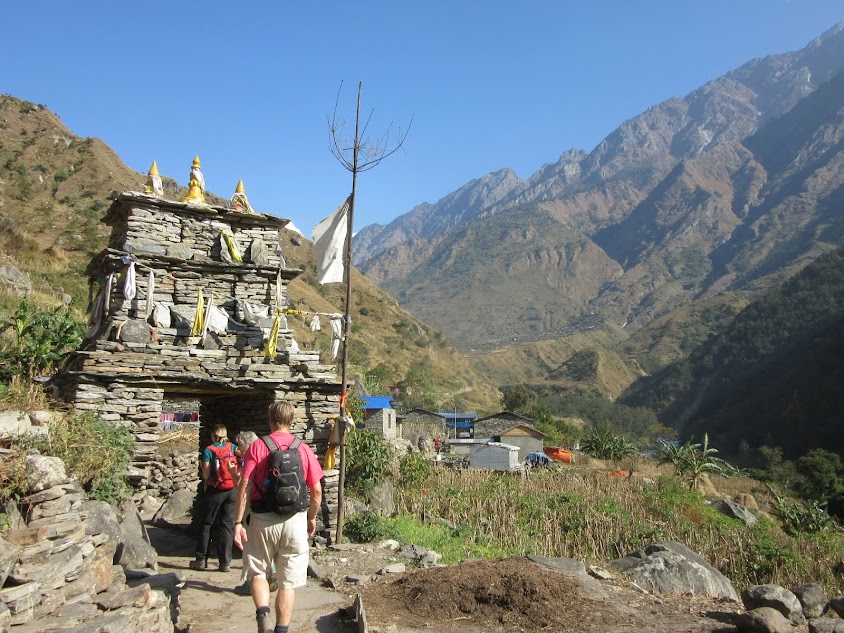
The Tsum Valley and Manaslu Trek is a true Himalayan adventure that combines two of Nepal’s most remote and culturally rich regions. Although the terrain shares similarities, each section of the trek offers unique challenges and stunning contrasts in landscape, culture, and altitude. From deep gorges and alpine forests to glacial valleys and high passes, this journey showcases Nepal’s natural beauty and heritage at its finest.
Located near the Tibetan border, the Manaslu region is home to Mount Manaslu (8,163 m)—the eighth-highest peak in the world. Crossing the Larkya La Pass (5,100 m) adds a rewarding challenge, especially for trekkers interested in both majestic mountain views and cultural exploration. The trails here are perfect for teahouse treks, with the Manaslu region opened to tourism in 1991 and the Tsum Valley added in 2008.
The trek begins with a scenic drive to Arughat, a riverside town where we start walking through rolling hills and traditional villages. Local people often welcome trekkers with warm smiles, butter tea, or a hot meal. From Philim, we turn east into the narrow Lower Tsum Valley, climbing through pine and rhododendron forests toward the broader Upper Tsum Valley, which we explore over six enriching days.
The Tsum Valley Trail connects to the Around Manaslu Circuit, guiding us through bamboo forests to Nupri and onward to villages like Samagaon, where we visit Kargyu Chholing Monastery and Pungyen Gompa and even hike to Manaslu Base Camp. Along the way, we encounter Mu Gompa, Rachen Nunnery, and the quiet stone village of Chekampar, surrounded by barley, maize, and potato fields.
After rejoining the Manaslu Circuit, we ascend to the breathtaking Larkya La Pass, then descend into the lush Marsyangdi Valley, linking with the Annapurna Circuit Trail. The trek ends in Bhulbhule, from where we return by road to Kathmandu.
This 20-day journey is more than a trek—it’s a deep dive into the heart of the Himalayas, blending solitude, scenery, and spirituality in one unforgettable experience.
Highlights
- Scenic drive from Kathmandu to Soti Khola
- Travel through the Budi Gandaki River valley and the magnificent gorge
- Visit Sacred Tsum Valley and its dramatic landscape
- Stunning views of Ganesh Himal, Buddha Himal
- An Old monastery such as Mu Gompa
- Trekking through Manaslu Conservation Area
- Jaw-dropping Himalayan pass of Larke La (5160 meters)
- Encounter the Annapurna Circuit Trail trekking trails
Trek Difficulty:
Required Permits:
- Manaslu Restricted Area Permit (USD 100 per week during the Autumn season, USD 75 per week during the Spring season)
- Tsum Valley Restricted Area Permit (USD 40 per week during the Autumn season, USD 30 per week during the Spring season)
- MCAP (Manaslu Conservation Area Permit) (NPR 3,000 per person)
- Local Gov. Tax (NPR 1,000 per person)
5. Dhaulagiri Circuit Trek – 20 Days
.jpg)
The Dhaulagiri Circuit Trek is a challenging and adventurous journey that circles the seventh-highest mountain in the world—Mt. Dhaulagiri (8,167 m/26,795 ft), also known as the "dazzling white mountain." The Dhaulagiri peak was once believed to be the world's tallest in 1808, until Kangchenjunga and then Everest surpassed it in later years.
What sets Dhaulagiri apart is its dramatic rise of 7,000 meters (22,970 ft) from the Kali Gandaki River, making it one of the world’s most prominent and breathtaking mountain walls. Located northwest of Pokhara and near the remote Dolpo region, Dhaulagiri stands opposite the Annapurna Massif, creating spectacular Himalayan scenery.
The trek begins in Kathmandu with sightseeing and trek preparation before driving to Beni. From there, the trail passes through villages like Babiyachaur, Dharapani, and Dhobang, following the Myagdi Khola River. The route gradually ascends to Italian Base Camp, Glacier Camp, and Dhaulagiri Base Camp.
Crossing French Pass (5,445 m), the trek enters Hidden Valley—a remote alpine basin offering stunning views of the Dhaulagiri Range. After resting, trekkers head over Dhampus Pass (5,250 m) and descend to Yak Kharka before reaching Jomsom.
A short scenic flight takes you to Pokhara, where you can relax by the lake. Finally, the journey ends with a drive back to Kathmandu for a farewell dinner. This 20-day trek is ideal for experienced trekkers seeking high-altitude adventure and dramatic landscapes far from the crowded trails of Nepal.
Highlights
- A long and scenic drive from Kathmandu to Beni
- Explore the Mur Magar Village
- Breathtaking views of Tukuche Peak(6,837m), Dhaulagiri II(7,751m) and more
- Up-close views of Mount Dhaulagiri
- Crossing the French Pass is rewarded with fantastic views of Mukut Himal
- Trekking to Hidden Valley and Dhampus Pass
- Taste the apples fin Marpha on the way to Jomsom
- Enjoy a scenic flight to Pokhara from Jomsom
Trek Difficulty:
- Challenging
- Remote and off -the -beaten -path
Required Permits:
- Annapurna Conservation Area Permit (ACAP) (NPR 3,000 for foreign citizens)
- TIMS Card Permit fees (NPR 2,000)
6. Kanchenjunga Circuit Trek—22 Days
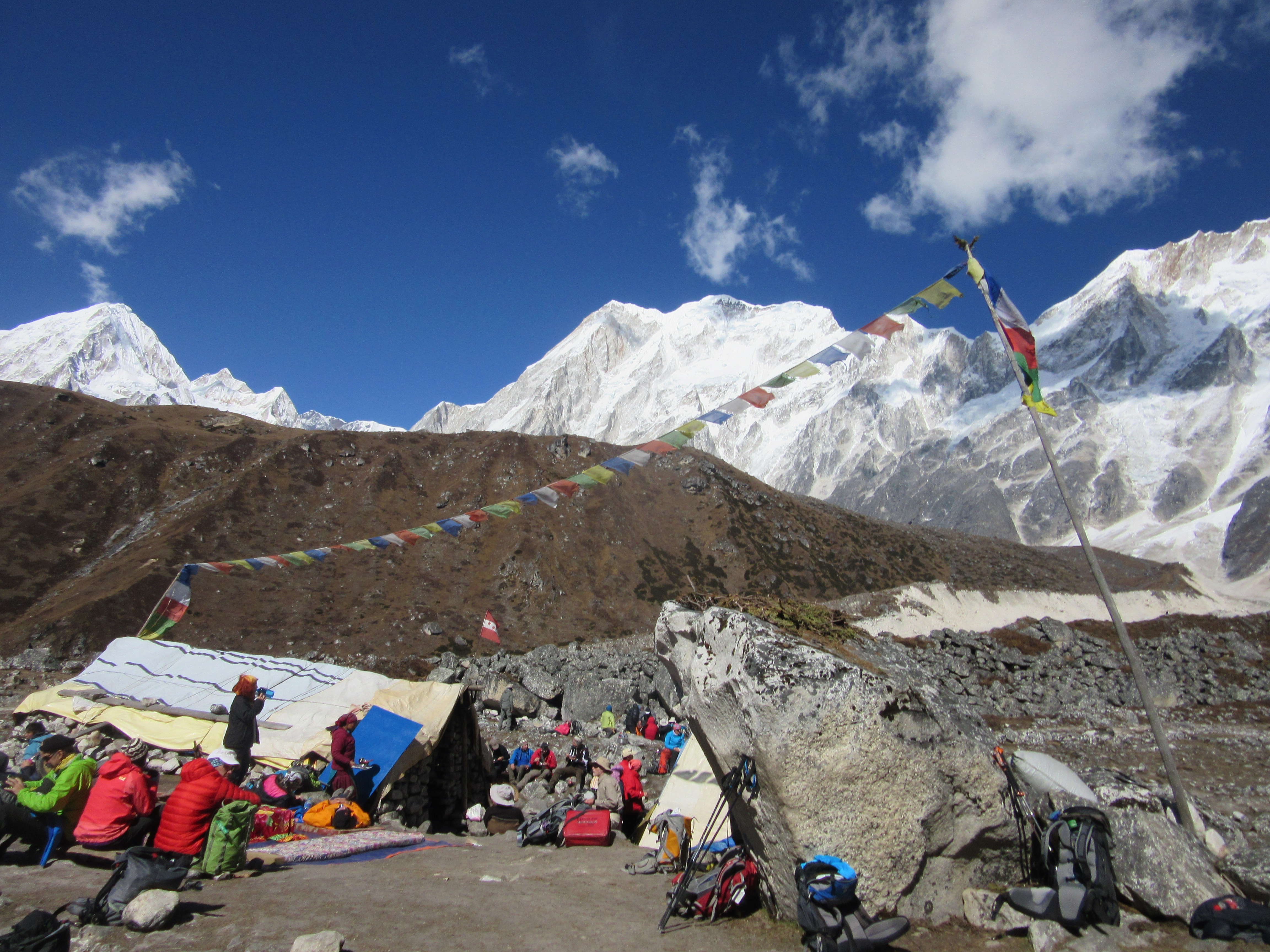
The Kanchenjunga Circuit Trek is a remote and challenging adventure to the base of the world’s third-highest mountain, Mt. Kanchenjunga (8,586 m). Located in eastern Nepal near the border of Sikkim, this trail is perfect for trekkers seeking solitude, raw Himalayan landscapes, and authentic cultural encounters.
Kanchenjunga means “Five Treasures of Snow,” representing its five majestic peaks. Opened to trekkers only in 1988, this restricted region remains untouched and rich in biodiversity. The trail passes through the Kanchenjunga Conservation Area, home to snow leopards, Himalayan black bears, red pandas, and rare bird species.
The trek begins with a scenic flight to either Bhadrapur and a drive to Taplejung or a flight to Suketar, followed by days of walking through remote villages, dense forests, alpine meadows, and glacial valleys. You’ll pass through beautiful spots like Ghunsa, Kambachen, and Lhonak before reaching Pang Pema—the Kanchenjunga North Base Camp—for the best views of the massif.
Along the way, trekkers witness diverse terrain, from rhododendron forests to rocky landscapes dotted with frozen streams, waterfalls, and glaciers. Highlights include dramatic peaks like Mt. Jannu (7,710 m), the towering Kanchenjunga range, and unforgettable sunrises over the eastern Himalayas.
Spring (March–May) is the best time to trek, with blooming flowers and clear mountain views. Occasional sightings of snow leopard tracks and high-altitude wildlife add thrill to the journey.
Ideal for seasoned trekkers, the Kanchenjunga Circuit is among Nepal’s most rewarding high-altitude treks. For those seeking alternative adventures, treks in Upper Mustang, Manaslu, or the Dhaulagiri Circuit are also excellent choices.
Highlights
- Demanding & remote area trek near India & Tibet borders
- Stunning views of Mt. Kanchenjunga (the 3rd highest peak)
- Explore local ethnic groups (Rais, Limbus, Sherpas)
- Visit charming villages, experience local culture & cuisine
- Highlight: Pangpema Base Camp (5,140m)
- High passes: Sele La Pass (4290m) & Sinion La Pass (4666m)
- Mount Kanchenjunga - the third-highest peak, like Jannu, Kabru, and Rathong.
- The Pangpema base camp, located at 5,140 meters (16.863 feet) above sea level,
Trek Difficulty:
- Challenging
- Remote and off -the -beaten -path
Required Permits:
- Kanchenjunga conservation area permit
- Restricted area permit
7. Nar Phu Valley Trek—16 Days
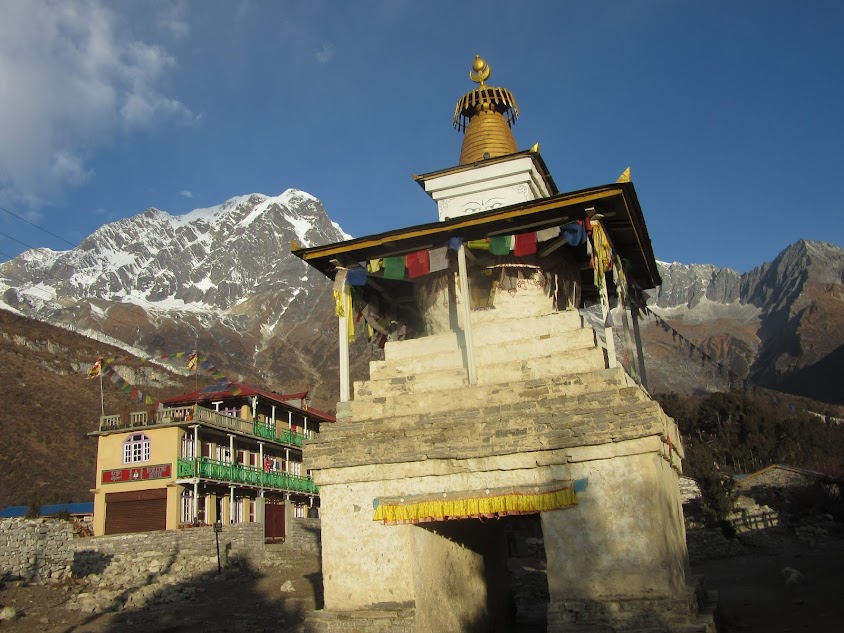
The Nar Phu Valley Trek is a remote and adventurous journey into one of Nepal’s least explored Himalayan regions, located in the rain shadow north of the Annapurna range. Ideal for experienced trekkers seeking isolation, raw alpine scenery, and authentic Tibetan culture, this trek offers a rare glimpse into a world untouched by modern life.
The trail winds through high-altitude landscapes, ancient Buddhist villages, narrow canyons, and rugged trails above the tree line. The Nar and Phu Valleys—hidden deep in the Manang district—are home to around 350 Nepalese Tibetans who rely on yak herding and farming. Life here continues in harmony with nature, far from the rush of modern civilization.
Trekking through this secluded region involves crossing two challenging high passes: Kang La Pass (5,200 m), linking Nar to the Manang Valley, and Thorong La Pass (5,416 m), one of the highest trekking passes in Nepal. These sections demand good physical fitness and prior high-altitude experience.
The journey rewards trekkers with stunning views of the Annapurna Massif, Lamjung Himal, Tilicho Peak, Manaslu, Machapuchhre, and the Dhaulagiri range. With minimal crowds, the route promises an immersive Himalayan experience—ideal for trekkers seeking solitude and pristine landscapes.
The trek ends at Jomsom, from where a short scenic flight takes you to Pokhara. Here, you can relax by the lakeside before returning to Kathmandu.
Highlights
- Trekking in the restricted Nar and Phu Valley in the Manang District
- Explore ancient monasteries, including Tashi Lakhang Monastery
- Trekking to the unexplored surroundings of the Annapurna region
- Explore the dramatic mountain views of the high snow peaks
- Crossing Kang La (pass) at 5,322m
- Crossing Thorong La Pass at 5,416m
- The holy pilgrimage site of Muktinat
Trek Difficulty:
- Strenuous
- Alpine High passes & long walking days
Required Permits:
- Nar Phu Valley Restricted Area Trekking Permit (USD 90 per week on the Autumn Season, USD 75 per week on the Spring Season)
- Annapurna Conservation Area Permit (ACAP) (NPR 3,000 for foreign Citizens)
8. Upper Dolpo and Shey Gompa Trek—25 Days
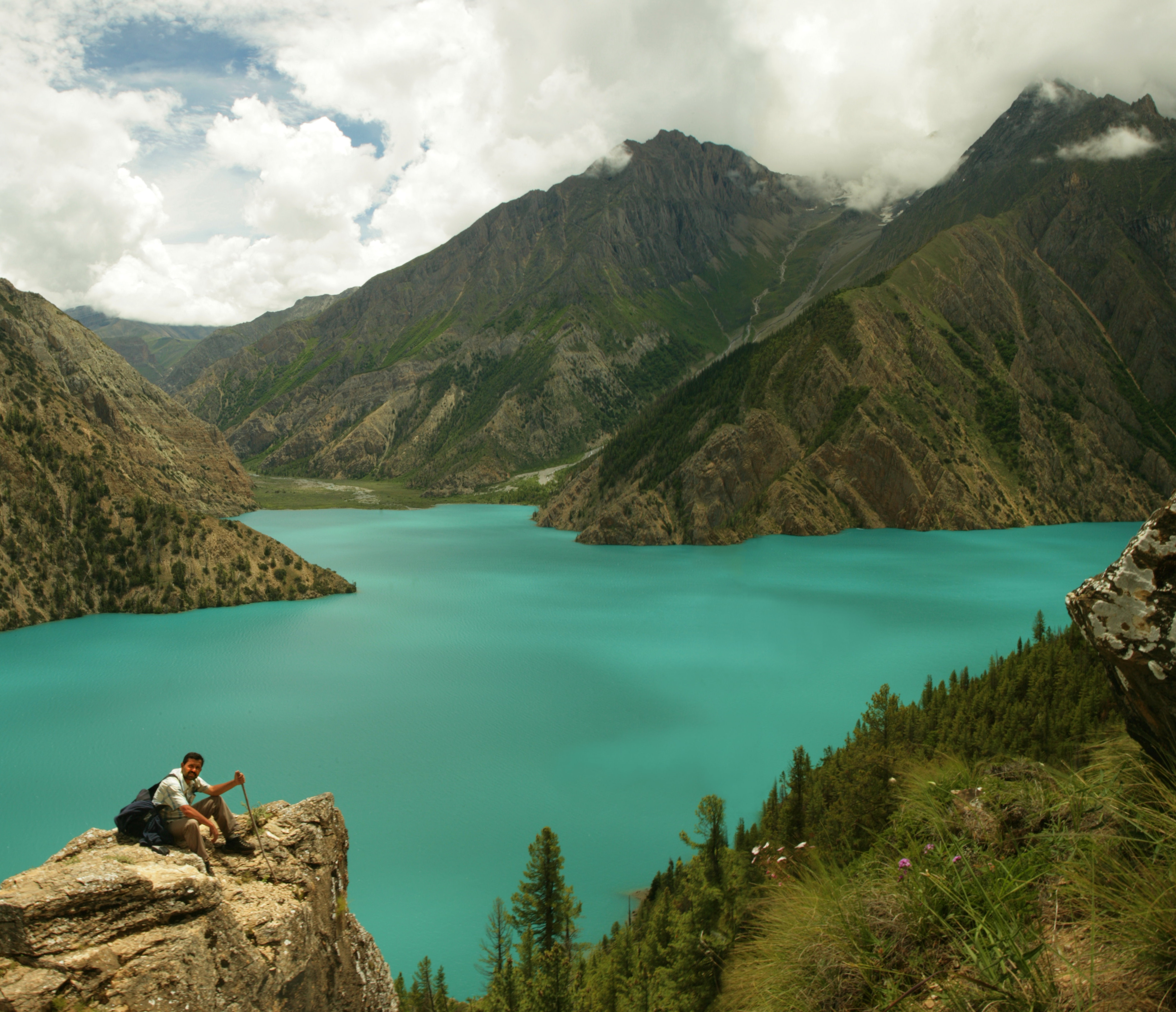
The Upper Dolpo Shey Gompa Trek is one of Nepal’s most remote and culturally rich adventures. Tucked away near the Tibetan border, this journey leads through high-altitude deserts, ancient Bon traditions, and timeless Tibetan-influenced villages untouched by modern development.
Dolpo, also known as Ba-Yul or “hidden land,” was historically settled by Tibetan Drokpa nomads and Rokpa farmers in the 10th century. The region remained closed to foreigners until 1989 and still feels like a preserved world, with isolated communities living as they have for centuries. Trekking here is physically demanding yet spiritually uplifting, offering a rare view into authentic Himalayan culture.
The trail passes through Shey Phoksundo National Park, home to snow leopards, blue sheep, and over 200 bird species. The stunning Phoksundo Lake, 4.8 km long and 1.8 km wide, is famed for its clear turquoise water and mystical legends. Locals believe a demon’s flood formed it, and many claim to see submerged village ruins beneath its surface.
This trek also includes visits to Shey Gompa, Dho Tarap, and sacred Bon and Buddhist monasteries nestled in barren cliffs. The landscapes are dramatic—steep gorges, vast plateaus, and wind-swept high passes, reaching well above 5,000 meters.
With minimal tourism and limited infrastructure, Upper Dolpo offers raw beauty and genuine encounters with local people. It’s not just a trek; it’s a journey into one of the last truly wild corners of Nepal. For experienced trekkers seeking silence, solitude, and soul-stirring scenery, the Upper Dolpo Trek is an unforgettable expedition into the heart of the Himalayas.
Trek Difficulty:
- Challenging
- Remote area, Off-the-beaten path
Required Permits:
- Shey Phoksundo National Park Entry Permit (USD 30 per person for the first 7 days, USD 7 per day thereafter)
- Restricted Area Permit (RAP) for Upper Dolpo (USD 500 for the first 10 days, USD 50 per day thereafter during the Autumn season; USD 10 per day during the Spring season)
9. Langtang Valley Trek—10 Days
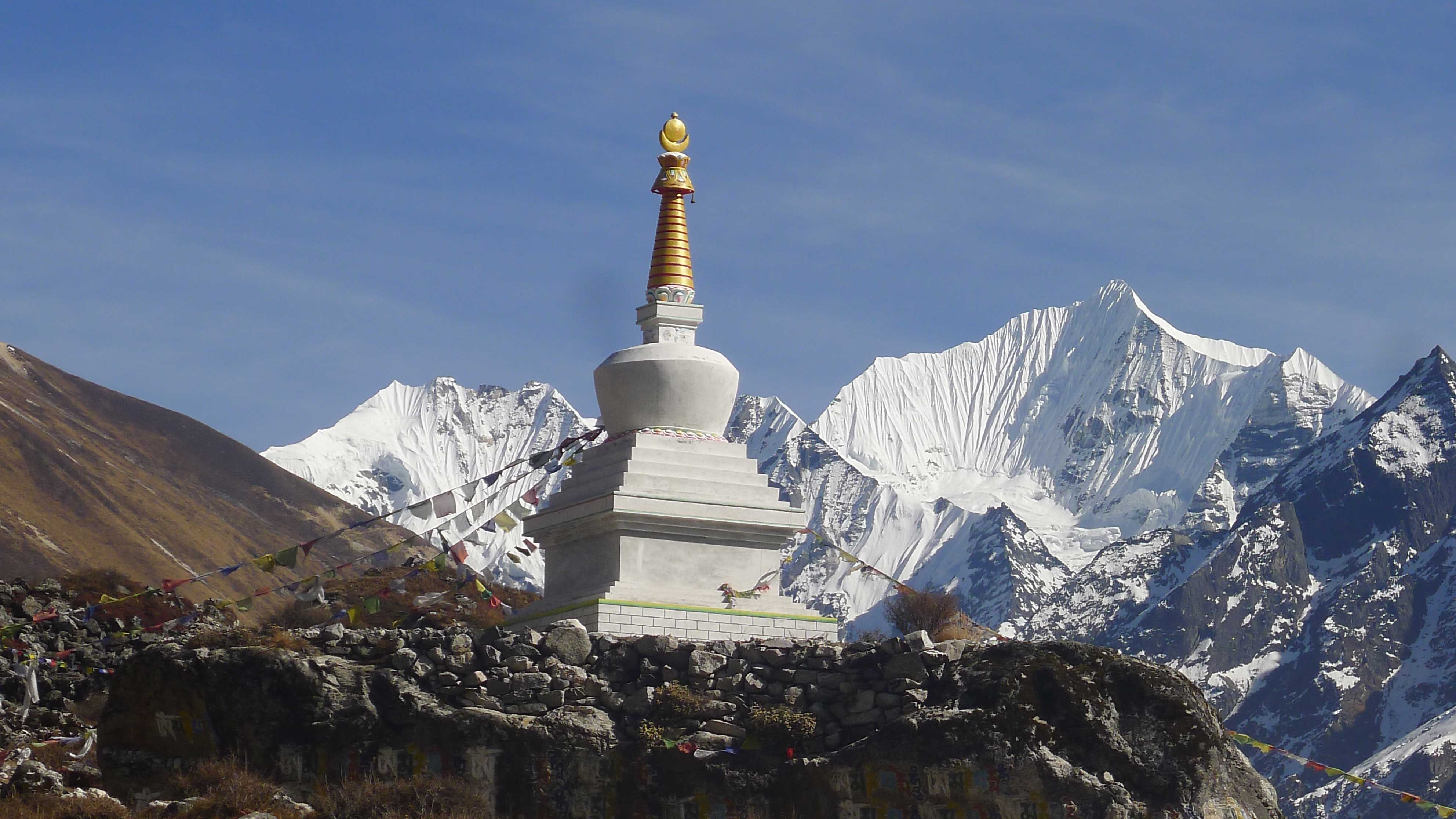
The Langtang Valley Trek offers a beautiful short trek near Kathmandu that combines stunning Himalayan scenery, rich cultural experiences, and peaceful trails. Located to the north of Kathmandu, Langtang is one of Nepal’s less crowded trekking regions, ideal for travelers seeking mountain views without the busier routes of Annapurna or Everest.
The trek begins with a drive to Syabrubesi, the starting point of the trail. From here, the route ascends through forests filled with rhododendron, oak, and bamboo, with chances to spot red pandas and a variety of bird species. Traditional Tamang and Sherpa villages offer a glimpse into the region’s Tibetan-influenced culture, while welcoming teahouses provide comfortable lodging and home-cooked meals.
Highlights of the trek include the scenic village of Langtang, the ancient Kyanjin Gompa monastery, and panoramic viewpoints like Kyanjin Ri and Tsergo Ri, which offer breathtaking views of Langtang Lirung (7,234 m), Ganesh Himal (7,446 m), and surrounding peaks.
In spring, trekkers enjoy blooming wildflowers; in autumn, the skies are clear with crisp views of the high Himalayas. For those with extra time, the route can be extended to visit the sacred Gosainkunda Lakes, important pilgrimage sites nestled in a dramatic alpine landscape.
The trek ends by crossing the Laurebina Pass and descending into the Helambu region, known for its gentle hills and serene villages. Accessible yet adventurous, the Langtang Valley Trek is perfect for trekkers with limited time who still want to experience the beauty, culture, and wilderness of the Nepalese Himalayas.
Trek Difficulty:
Required Permits:
- Langtang National Park Entry Permit (NPR 3,000 per person)
- TIMS Card (NPR 2,000 per person)
10. Rolwaling–Tashi Lapcha Pass Trek – 21 Days
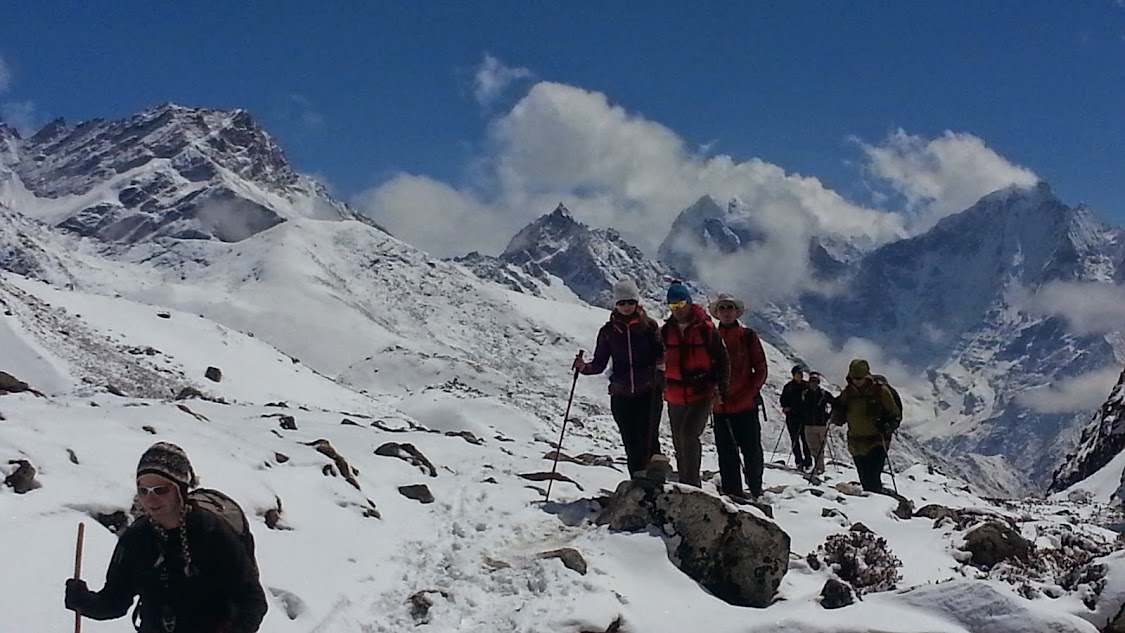
The Rolwaling–Tashi Lapcha Pass Trek is a remote and adventurous journey that links the Rolwaling Valley with the Khumbu region, offering stunning Himalayan landscapes, cultural encounters, and technical high-mountain passes. Located near the Tibetan border, this trail runs west to east beneath the towering Mt. Gauri Shankar (7,145 m) and crosses the challenging Tashi Lapcha Pass (5,750 m) into the legendary Sherpa heartland of the Khumbu.
Rolwaling is rich in biodiversity and home to the Tamang community, whose warm hospitality and traditional lifestyles add cultural depth to the trek. The trail winds past glaciers, alpine lakes like Tsho Rolpa, rocky ridges, and forests filled with rhododendrons and pine. Along the way, trekkers are rewarded with views of peaks like Pharchamo (6,187 m) and Ramdung (5,925 m).
This trek is considered strenuous due to its high altitude and technical sections, particularly across glacial terrain and rockfall zones near the pass. A permit from the Nepal Mountaineering Association is required, especially for those attempting Ramdung Peak.
Spring (March–May) and autumn (September–November) are the best times to trek, with clear skies and excellent visibility. September to November offers the best mountain views.
Ideal for experienced trekkers looking for an off-the-beaten-path adventure, the Rolwaling–Tashi Lapcha route promises unforgettable experiences in one of Nepal’s most secluded regions. For customized itineraries or shorter options, guided private treks can be arranged throughout the year, excluding the monsoon season.
Rolwaling–Tashi Lapcha Pass Highlights
- The flora and fauna of the Gaurishankar Conservation Area.
- The beautiful mountain views include Gaurishankar and Everest.
- Exploring a high-altitude glacier lake in the area
- Crossing a high mountain pass that links Rowaling Valley
- Visiting Sherpa communities.
- Flying out of Lukla airport with its amazing mountain views.
Trip Difficulty:
- Strenuous
- Requires some trekking and climbing experience
Required Permits:
- Gaurishankar Conservation Area Permit (NPR 3,000 for foreign citizens)
- Sagarmatha National Park Entry Permit (NPR 3,000)
- TIMS Card (NPR 2,000)
Why Choose Less Crowded Trekking Routes?
Venturing off the beaten path in Nepal's majestic Himalayas can offer a more profound trekking experience. Less crowded routes allow you to truly immerse yourself in the serene landscapes, where nature's symphony replaces the chatter of tourist groups. You get uninterrupted views, peaceful trails, and moments of solitude that make every step feel personal and purposeful.
Moreover, these trails foster deeper cultural interactions. Without the rush and distractions of busy trekking corridors, you’ll have time to share stories with locals, witness authentic traditions, and understand their daily rhythm. It’s a rare opportunity to connect meaningfully with both nature and people.
Lastly, lesser-known routes often lead to breathtaking, untouched gems—remote valleys, alpine lakes, and hidden monasteries that few have seen. It’s an adventure in its purest form.
Conclusion
Nepal’s iconic trails are undeniably enchanting, but true wilderness seekers will find their hearts drawn to the less-traveled paths. Treks like Langtang Valley, Manaslu Circuit, Upper Mustang, Makalu Base Camp, and Dhaulagiri Circuit promise raw beauty, solitude, and cultural depth without the crowds.
If you’re craving an authentic trekking experience, consider stepping away from the masses. These routes aren't just trails—they're invitations to discover Nepal’s hidden soul.
Important Notes
- Permits and Guidelines: Each trek comes with its own permit requirements. Always consult the latest regulations from official sources.
- Guided Trekking: Some routes mandate a licensed guide or trekking group. This not only ensures legal access but also supports conservation and local communities.
- Trek Difficulty: What’s easy for one trekker may be challenging for another. Consider your fitness level, the weather, and past trekking experience before choosing a trail.
FAQs
1. Are the less crowded trekking routes safe?
Yes, less crowded trekking routes in Nepal are generally safe, especially when you’re well-prepared. While they offer peace and solitude, they can also be more remote and rugged, so hiring a licensed guide is highly recommended. A guide not only ensures your safety and navigation but also helps with local logistics. Always inform someone about your route, carry proper gear, and be cautious in unfamiliar or high-altitude terrain.
2. Can I do these treks as a solo traveler?
Solo trekking in Nepal’s remote regions is possible, but not always recommended. These routes are less traveled, which means fewer people around in case of emergencies. Hiring a local guide or joining a small group can enhance your safety and overall experience. You’ll benefit from local knowledge, cultural insights, and smoother navigation. Some restricted areas also legally require a guide, so it's best to plan and check permit rules.
3. How do I prepare for high-altitude trekking?
To prepare for high-altitude treks, focus on building your physical stamina through hiking, cardio, and strength training. Acclimatization is key—plan your itinerary to allow time for gradual altitude gain. Stay well-hydrated, eat light meals, and avoid alcohol. It’s also wise to consult your doctor before trekking, especially if you have heart or lung conditions. Carry medication for altitude sickness, and always listen to your body during the trek.
4. Are these less crowded trekking places suitable for beginners?
Some remote treks in Nepal are suitable for beginners, especially shorter or lower-altitude routes. However, many require moderate fitness and previous trekking experience due to longer distances, altitude, and limited facilities. If you’re new to trekking, it’s best to start with a manageable trail and go with an experienced guide. With the right preparation and mindset, beginners can still enjoy the incredible beauty of Nepal’s off-the-beaten-path trails.
5. When is the best time to visit these less crowded trek destinations?
The best time to explore Nepal’s less crowded trekking routes is during spring (March to May) and autumn (September to November). These seasons offer clear skies, pleasant temperatures, and the most stable weather conditions, ideal for safe trekking. Trails are also more accessible, with fewer chances of rain or snowfall. Visiting during the off-season is possible, but it may involve more weather-related challenges and less predictable trail conditions.
6. Do I need special permits for the less crowded trekking routes?
Yes, most remote treks in Nepal require permits, even if the trails are less crowded. Depending on the region, you may need a combination of national park entry permits, restricted area permits, and a TIMS (Trekkers’ Information Management System) card. These permits help support conservation efforts and local development. Always obtain them through a licensed agency or guide before starting your trek to avoid fines or legal issues along the way.
7. What type of accommodations can I expect on these less crowded treks?
Accommodations on remote trekking routes in Nepal range from basic teahouses to tented camps, depending on the location. Some trails offer simple lodges with local food and minimal facilities, while others require full camping setups arranged by trekking agencies. You may not find the comfort of commercial treks, but the hospitality and authenticity of local homestays make the experience memorable. It’s important to be flexible and carry essential gear just in case.
8. How can I reach the starting points of these less crowded treks?
Most starting points for remote treks in Nepal are accessible from Kathmandu or Pokhara by a combination of road transport and domestic flights. Some areas may require long jeep rides or charter flights to remote airstrips. Trekking agencies can arrange your transportation and ensure you reach the trailhead safely. It’s wise to plan a buffer day or two in case of delays, especially during the monsoon or winter seasons.
9. How physically demanding are these less crowded trekking routes?
Remote trekking routes in Nepal are often physically demanding, requiring good endurance and mental resilience. The trails can be longer, steeper, and less developed compared to popular routes. Trekkers should be comfortable walking 5–7 hours daily over rugged terrain, often at high altitudes. Pre-trip training, acclimatization, and guided support can make the journey more manageable. The physical effort is well worth it for the solitude and unspoiled mountain scenery.
10. Can I experience the local culture during these treks?
Absolutely. One of the best parts of trekking off the beaten path in Nepal is the cultural experience. These trails pass through remote villages where you’ll meet indigenous communities such as Sherpas, Tamangs, Gurungs, and Bonpo practitioners. You’ll witness traditional lifestyles, visit monasteries, join local festivals, and maybe even stay in homestays. The connection with local people adds depth to your journey and offers a truly authentic Himalayan adventure.
11. Are teahouses and accommodations available along these trails?
Most remote trekking routes do have basic teahouses or homestays along the way, though the facilities may be more limited than those on popular treks. You’ll find simple rooms, basic meals, and often shared toilets. In some extremely remote areas, camping might be the only option. It’s best to go through a trekking agency that can arrange logistics and ensure you have access to shelter, food, and safety on your route.


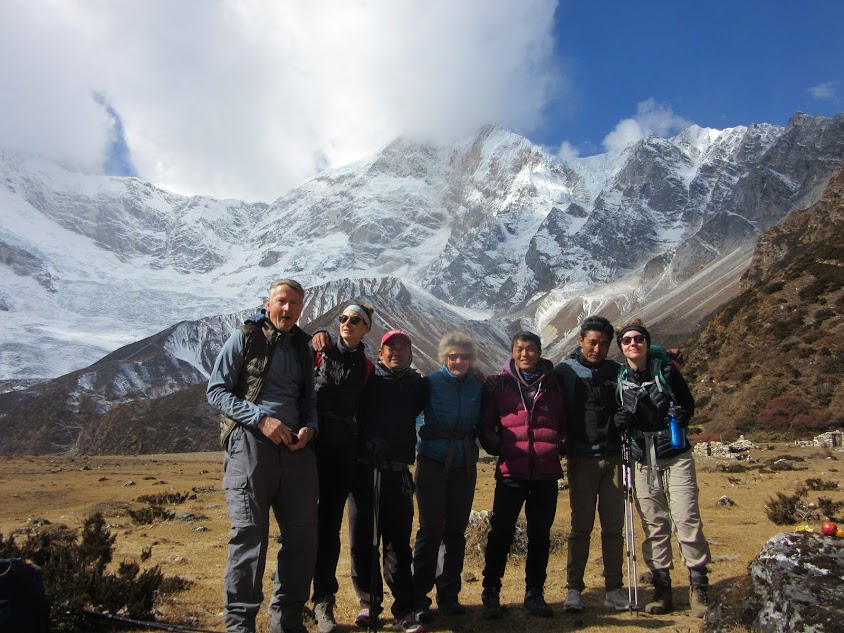




.jpg)





